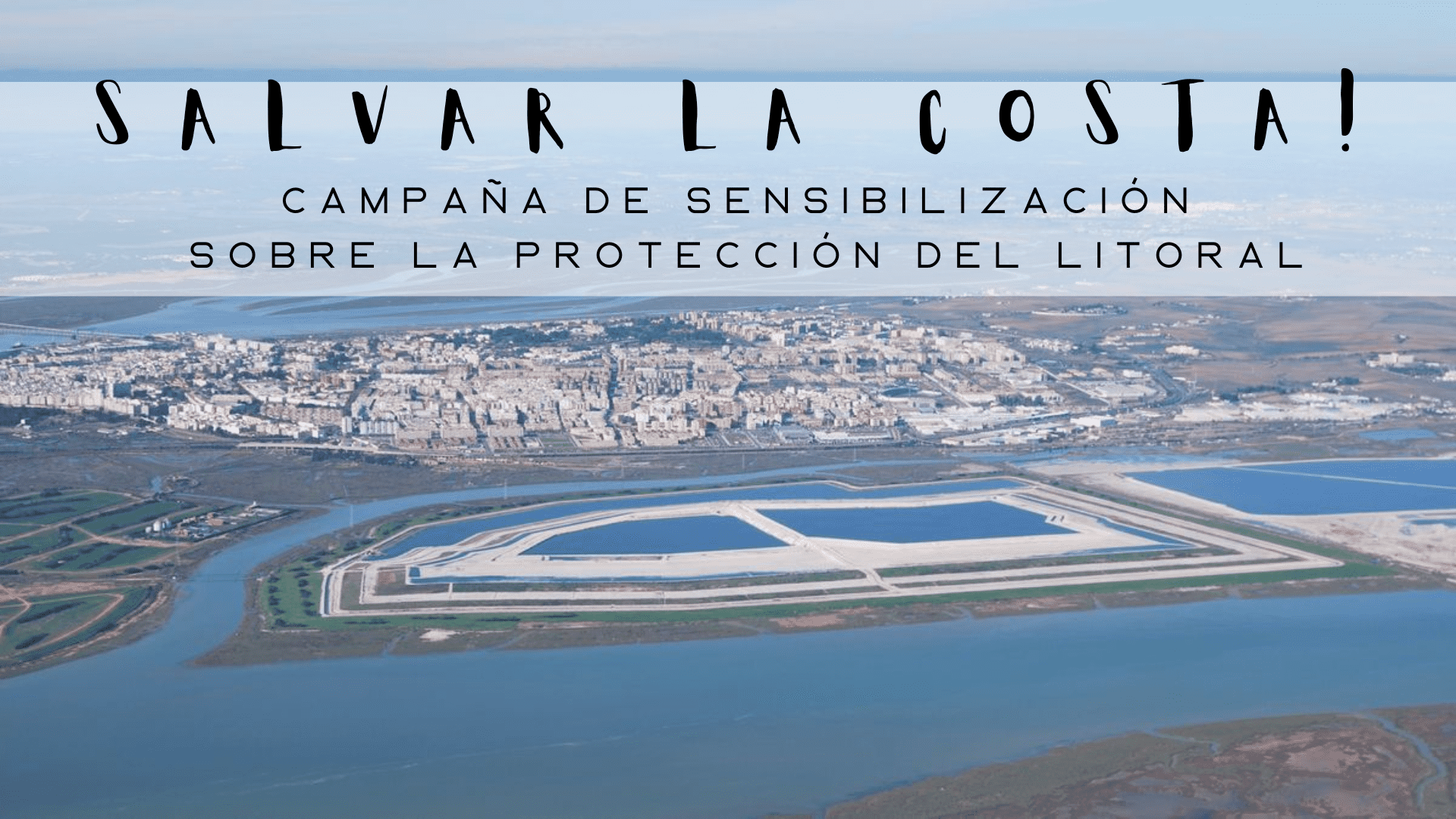La producción de ácido fosfórico en el Polo Químico de Huelva desde 1967 ha generado la acumulación de un residuo conocido como fosfoyeso, directamente sobre las marismas del estuario del río Tinto, a menos de 1 km de la ciudad de Huelva. Estos residuos (120 Mt) ocupan un área de 1200 hectáreas y contienen impurezas de metales tóxicos y radionúclidos.
La planta de fertilizantes cesó el vertido en 2010 por decisión de la Audiencia Nacional. Sin embargo, la balsa permanece ocupando las marismas del río Tinto. Esta balsa se localiza en el prisma de marea del estuario y no es estanca. Los efluentes que provienen de su lixiviación dejan una huella característica en el Estuario de Huelva e incluso puede extenderse a zonas remotas como resultado de la acción mareal. La mayoría de los estudios sobre las balsas de fosfoyesos de Huelva se han centrado en el impacto radiológico sobre el entorno estuarino. Sin embargo, recientemente se ha comenzado a investigar el aporte de contaminantes metálicos desde el fosfoyeso al estuario. Aún así, no se conocen los resultados de una clasificación y caracterización del fosfoyeso basada en la legislación vigente.
El fosfoyeso es un residuo constituido casi en su totalidad por yeso (CaSO4·2H2O), el cual puede reciclarse como aditivo agrícola o como material de construcción. Además, la balsa de fosfoyesos contiene una pequeña fracción residual de ácidos libres procedentes del proceso industrial, principalmente ácido fosfórico, sulfúrico y fluorhídrico. El ácido fosfórico es el principal ácido residual y corresponde a aquella fracción de producto que no ha podido separarse en la fábrica para su comercialización. La mayor parte de los contaminantes en la balsa son móviles y se concentran en las soluciones ácidas residuales que ocupan el espacio intersticial del residuo. Estas soluciones ácidas y potencialmente contaminantes representan en sí el verdadero riesgo ambiental de la balsa de fosfoyesos. La balsa de fosfoyesos está expuesta a condiciones de meteorización. La región se caracteriza por un clima mediterráneo con inviernos lluviosos y veranos secos y cálidos. La dinámica de los contaminantes en la balsa está directamente influenciada por las variaciones estacionales. Durante el periodo de lluvias, las soluciones ácidas contaminantes migran a lo largo del perfil del fosfoyeso hacia las zonas más profundas en contacto con la marisma. En la marisma, la ausencia de oxígeno y la alta concentración de materia orgánica favorecen la presencia de bacterias sulfato-reductoras cuya actividad metabólica genera compuestos gaseosos de azufre. Estos gases reaccionan con los metales en solución y se produce la precipitación de sulfuros, lo que limita la capacidad contaminante de estas soluciones. Sin embargo, la marisma no tiene capacidad para retener todas las soluciones ácidas y una parte de los lixiviados migran lateralmente hasta su descarga directa al Estuario de Huelva.
Si estás interesado en tener con Pacto Verde algún tipo de colaboración, no dudes en ponerte en contacto con nosotros a través del correo electrónico info@pactoverde.org, o a través de las redes sociales.
The production of phosphoric acid at the Polo Químico de Huelva since 1967 has led to the accumulation of a waste known as phosphogypsum, directly on the marshes of the estuary of the Tinto river, less than 1 km from the city of Huelva. This waste (120 Mt) occupies an area of 1200 hectares and contains impurities of toxic metals and radionuclides.
The fertiliser plant ceased dumping in 2010 by decision of the National Court. However, the pond remains occupying the marshes of the Tinto river. This pond is located in the tidal prism of the estuary and is not watertight. The effluent from its leaching leaves a characteristic footprint in the Huelva Estuary and may even spread to remote areas as a result of tidal action. Most studies on the Huelva phosphogypsum ponds have focused on the radiological impact on the estuarine environment. However, the contribution of metallic pollutants from the phosphogypsum to the estuary has recently begun to be investigated. Even so, the results of a classification and characterisation of phosphogypsum based on current legislation are not known.
Phosphogypsum is a waste consisting almost entirely of gypsum (CaSO4-2H2O), which can be recycled as an agricultural additive or as a building material. In addition, the phosphogypsum pond contains a small residual fraction of free acids from the industrial process, mainly phosphoric, sulphuric and hydrofluoric acid. Phosphoric acid is the main residual acid and corresponds to that fraction of the product that could not be separated at the plant for marketing. Most of the contaminants in the pond are mobile and are concentrated in the residual acidic solutions that occupy the interstitial space of the waste. These acidic and potentially polluting solutions represent the real environmental risk of the phosphogypsum pond itself. The phosphogypsum pond is exposed to weathering conditions. The region is characterized by a Mediterranean climate with rainy winters and hot, dry summers. The pollutant dynamics in the pond are directly influenced by seasonal variations. During the rainy season, acidic pollutant solutions migrate along the phosphogypsum profile towards the deeper areas in contact with the marsh. In the marsh, the absence of oxygen and the high concentration of organic matter favour the presence of sulphate-reducing bacteria whose metabolic activity generates gaseous sulphur compounds. These gasses react with the metals in solution, and sulphide precipitation occurs, which limits the polluting capacity of these solutions. However, the marsh does not have the capacity to retain all the acid solutions, and some of the leachates migrate laterally until they are discharged directly into the Huelva Estuary.
We will be sharing more information every week, follow us!
If you are interested in having any kind of collaboration with Pacto Verde, please do not hesitate to contact us via email info@pactoverde.org, or through social media.


